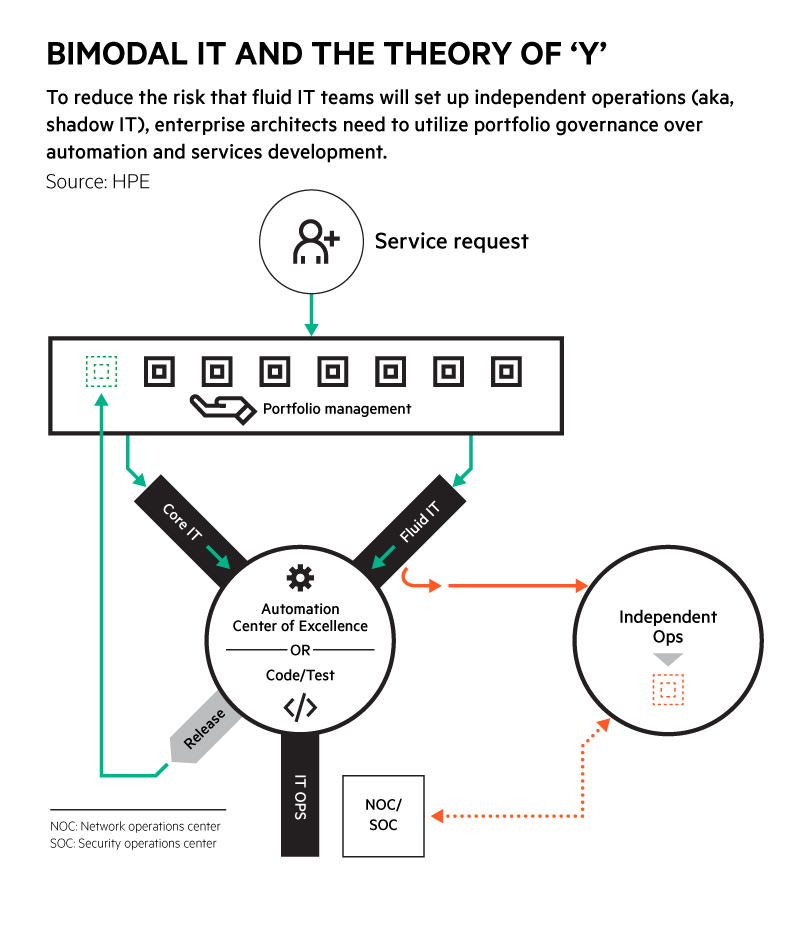In my travels across the world, I've been gathering the perspectives of numerous enterprise customers around their current level of automation and their use of new digital service delivery technologies. I've found that many organizations are grappling with similar issues in terms of how to deliver, manage, and finance cloud services in the digital age.
Here are five common themes that surfaced in my conversations that spell out the top priorities for achieving an effective digital transformation.
1. Cloud service delivery
Large enterprises are still struggling to build a strategy for their cloud service delivery model that enables digital transformation. To enable that, they need to think about the transition to transformation in a new way, asking questions such as:
- What are the priorities?
- How do we move to a structured, agile program?
- Who do we need to get the work done?
- What tools and capabilities do we need?
The answers to these questions can help organizations realize incremental value in their cloud investments over time.
When I use the Open Group IT4IT reference architecture to frame this new way of thinking, practitioner confusion begins to dissipate. IT4IT defines an orderly set of steps IT can follow to reach an expected outcome by focusing on the people, processes, and data that are needed to manage a service through its life cycle.
2. Shadow IT
The stress of speed to market has driven the adoption of a new role—VP of digital business. This executive determines what mix of technologies and people will best be able to quickly iterate and deliver new applications.
It's common in many enterprises today to find a new generation of developers "geeking out" on open source tools, with no fear of breaking anything. While this approach can help organizations innovate rapidly, it can also threaten the ability of IT operations to retain full control of enterprise infrastructure and applications.
In meeting with IT organizations and business leaders, I have been talking an idea I have, which I call my "theory of "Y." See the figure below, which depicts a bimodal IT scenario.
On the upper portion of the "Y," the left side represents traditional/core applications and the right side represents fluid/cloud native applications. The stem of the "Y" represents IT operations. In some client organizations, the stem of the "Y" supports both core and fluid applications. But in others, an independent IT operations department is spun up to handle fluid applications. This shadow IT has inherent cost implications: as fluid development teams find a way to operate at a pace that meets business demands, they begin to build up a secondary IT operations capability to ensure service performance.
Why? First, cloud is being provisioned outside the norm via public and managed service providers. Second, the existing IT operations department is not able or willing to perform with the necessary agility and speed.
3. Demand for predictive capabilities
Enterprise IT leaders have a high expectation that technology can predict where and for how long a workload should live. This predictive, policy-based decision logic has become a top priority for more mature enterprises that are ready to use a hybrid service delivery capability and have the confidence to move application workloads to a public cloud or a managed provider.
Policies relating to security, cost, service level, regulatory compliance, and volume are all on the wish list.
4. Cloud finance
It has become clear to me that cloud finance is another top priority for enterprise business and IT leaders. Organizations want the ability to do chargeback—i.e., allocate the cost of cloud service to the departments and customers that use them—with an understanding of the total cost of the service.
The capability to provide usage metering and dynamic pricing against usage is "a must" now for service providers. Tools and services need to support the dynamic nature of changes in the market based on supply-and-demand theories.
5. Hybrid cloud
The need to provide public cloud services within the enterprise is another common theme that's emerging. Organizations must make big decisions regarding which workloads can run in the public cloud, and what type of model they will implement: Will they provide a self-service marketplace, or will they control and not expose the source of the service delivery? How will they control the portfolio, and who will make decisions regarding services and service delivery?
Many of these conversations lead back to the need to think about the cloud service delivery model in a new way. On-demand capacity and scalability are still top drivers for private cloud adoption.
Automation is key
Taking all of these factors into consideration, I believe that enterprises won't be able to make progress in any of the five areas outlined above without these core capabilities:
- Portfolio management
- Demand management
- Capacity management
- Availability management
- Release management
- Asset and configuration management
- Event management
- Security management
The path to realizing all of these capabilities is automation. Automating more than traditional runbook, patching, and compliance policies is a mandatory step for this new generation of hybrid service delivery. Complete service lifecycle management should be the ultimate goal for IT as part of the new digital business.
Image credit: Flickr
Keep learning
Get up to speed on digital transformation with TechBeacon's Guide.
Download this free IDC white paper, "Enabling End-to-End Digital Transformation".
See IDC's Futurescape: Top 10 predictions for digital transformation.
How important is digital transformation to your org? Take our survey and find out how you stand next to the competition.
Thinking of making a change? TechBeacon's Careers Topic Center provides expert advice to prepare you your next career move.



